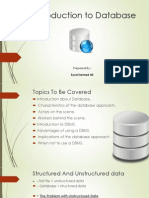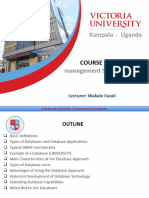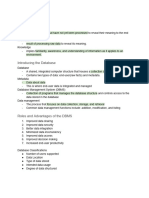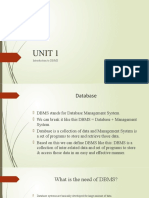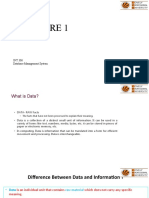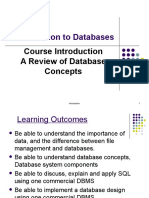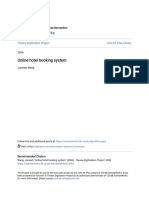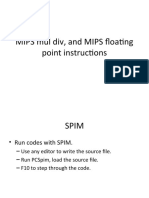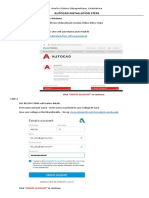0% found this document useful (0 votes)
69 views70 pages1.0 Introduction To Databases
The document discusses databases and database management systems. It begins by defining what data and information are, and the limitations of a file-based approach to data management. It then introduces databases as a way to organize data into tables and define relationships between data. A database management system (DBMS) allows users to define, create and manage access to a database. Key functions of a DBMS include data storage, retrieval and updating, as well as security management and concurrency control. Common DBMS examples include MySQL, SQL Server and Oracle.
Uploaded by
Michael John AbellonCopyright
© © All Rights Reserved
We take content rights seriously. If you suspect this is your content, claim it here.
Available Formats
Download as PDF, TXT or read online on Scribd
0% found this document useful (0 votes)
69 views70 pages1.0 Introduction To Databases
The document discusses databases and database management systems. It begins by defining what data and information are, and the limitations of a file-based approach to data management. It then introduces databases as a way to organize data into tables and define relationships between data. A database management system (DBMS) allows users to define, create and manage access to a database. Key functions of a DBMS include data storage, retrieval and updating, as well as security management and concurrency control. Common DBMS examples include MySQL, SQL Server and Oracle.
Uploaded by
Michael John AbellonCopyright
© © All Rights Reserved
We take content rights seriously. If you suspect this is your content, claim it here.
Available Formats
Download as PDF, TXT or read online on Scribd
/ 70
















